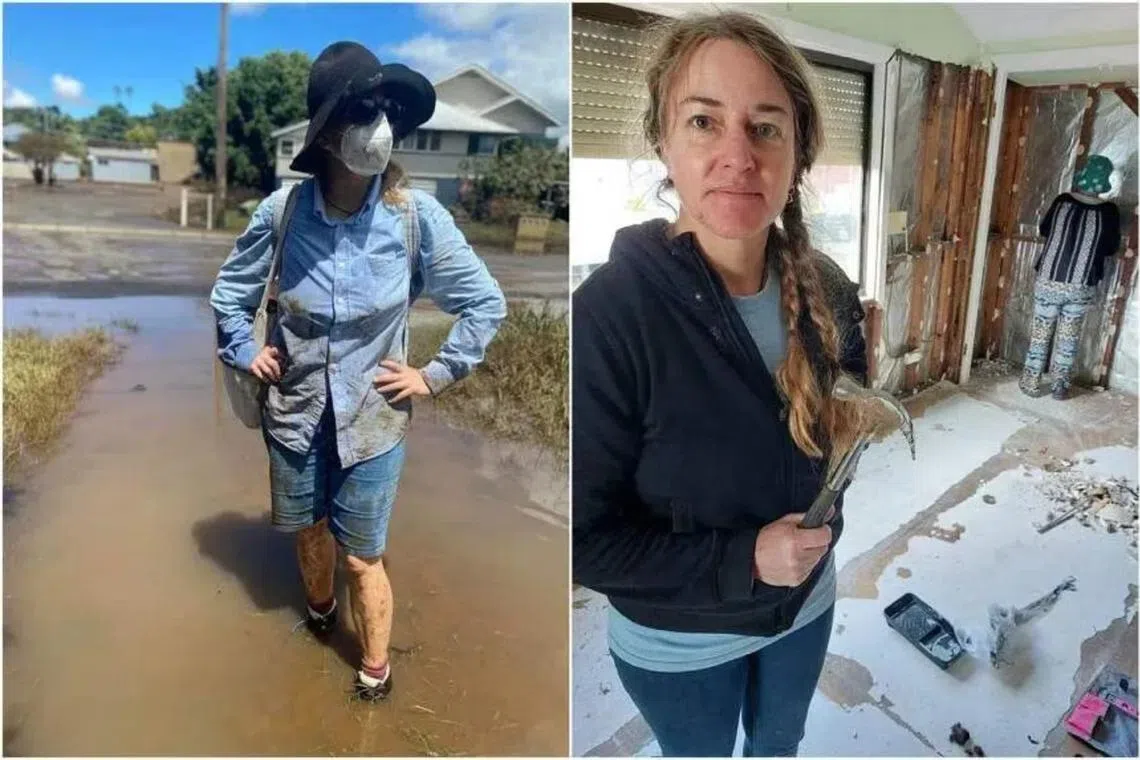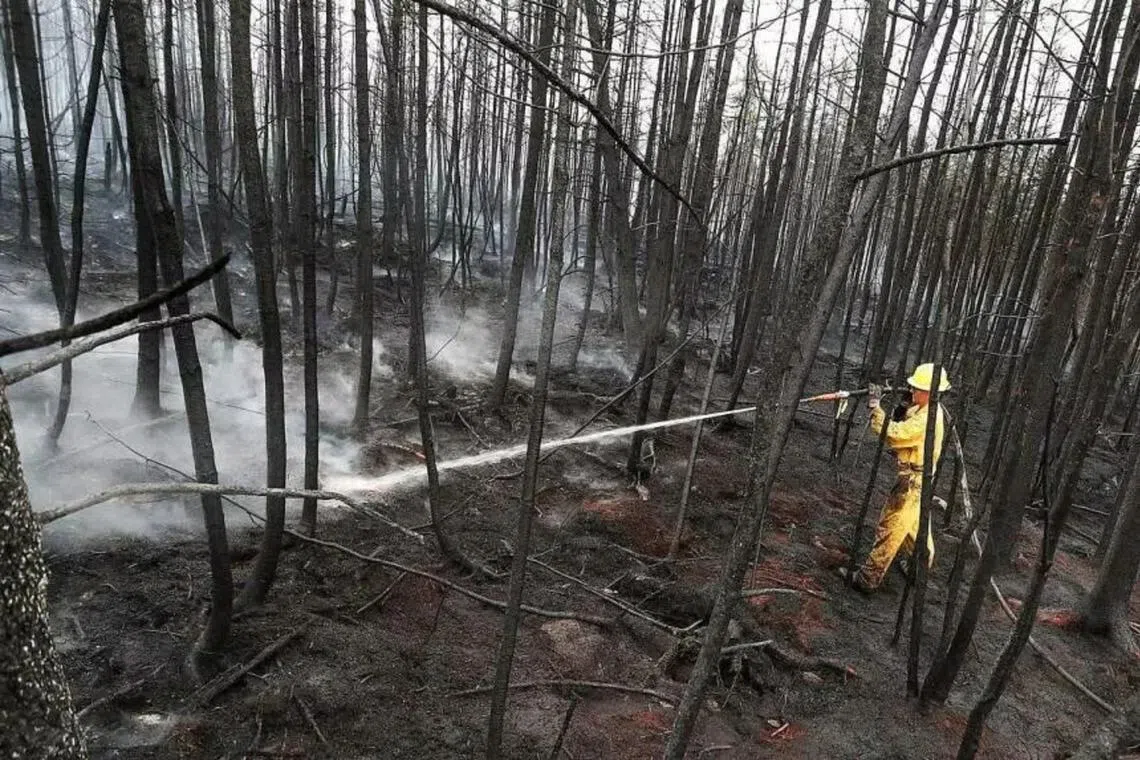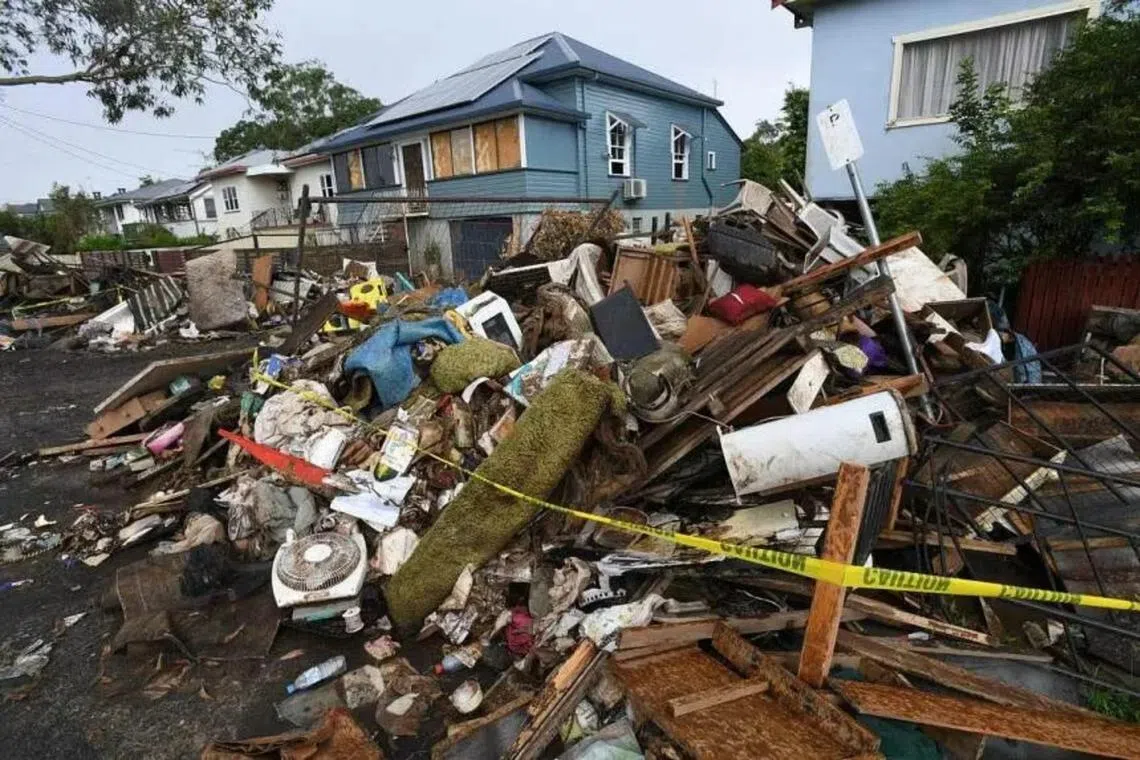Climate of fear: Extreme weather events take a toll on mental health
Sign up now: Get ST's newsletters delivered to your inbox
Follow topic:
Traumatic extreme weather events are worsening mental health problems and driving up insurance costs, creating a vicious circle of anxiety, despair and poverty. But out of the crisis comes hope that taking action will turn things around and that adapting to a world of wilder weather can reduce the risks. The Straits Times investigates.
‘A sinkhole of despair’: Climate change’s terrible toll on mental health

On a Sunday night in February 2022, Ms Naomi Shine grabbed a sleeping bag and a change of clothes and fled her home in the Australian city of Lismore, which was in the grip of one of the most devastating floods in the country’s history.
The flood waters were threatening to overtop the city’s levee, prompting a warning by the authorities for residents to evacuate the area by 5am on Monday. Ms Shine and her housemate decided not to wait.
At 10.30pm on Sunday, she hid some precious objects, among them a jewellery box, passports and musical instruments, including a home-made drum and a Tibetan singing bowl, in a ceiling cavity, and left for the home of a friend who lived on higher ground.
Mental health crisis looms as disasters worsen, say experts

A strange orange morning dawned in New York City on Tuesday last week, the usually pale yellow sunlight filtered through a haze of smoke from wildfires burning more than 1,000km north in Nova Scotia, Canada.
The causes of the fires that were spewing the smoke – which now regularly shrouds large swathes of North America, Australia and South-east Asia – may vary, but the underlying reality is that the warming planet has made them more frequent, widespread and intense.
More than 16,000 people in Nova Scotia had to be evacuated as wildfires consumed forests, fields and their homes. As at May 29, the fires had burnt almost 5,000 sq km of Alberta, British Columbia and Saskatchewan provinces.
For children, global warming triggers despair, anger – and hope

For a growing number of children across the globe, the future is looking pretty scary. Rising sea levels, floods that consume towns and cities, baking heatwaves, vanishing wildlife and plastic pollution are making them feel increasingly anxious, according to researchers. Climate change is a major source of that worry.
“Negative emotions stemming from or associated with the anticipation of climate change is often, but not always, labelled as eco-anxiety,” said Dr Denise Dillon, associate professor of psychology at James Cook University, Singapore.
“Other terms are ecophobia, eco-despair and environmental grief. Worry, guilt and hopelessness are negative emotions that are felt along with grief, anger and despair.”
Too costly? Extreme weather is weakening the insurance safety net

When disaster strikes, insurance is meant to cushion the blow and help people recover and rebuild.
Climate change is upending this. Household and business premiums are rising and, in some cases, insurance is no longer available in areas prone to floods, wildfires and storms, hurting the ability of families and communities to recover even as climate impacts become more frequent and severe.
Australia and many other nations, including the United States, are facing an insurance availability and affordability crisis as insurers struggle to cope with skyrocketing claims in the wake of weather-related disasters. Not only is this adding to the stress for people living in high-risk areas, but as climate impacts worsen and spread, more areas will be deemed high-risk.

